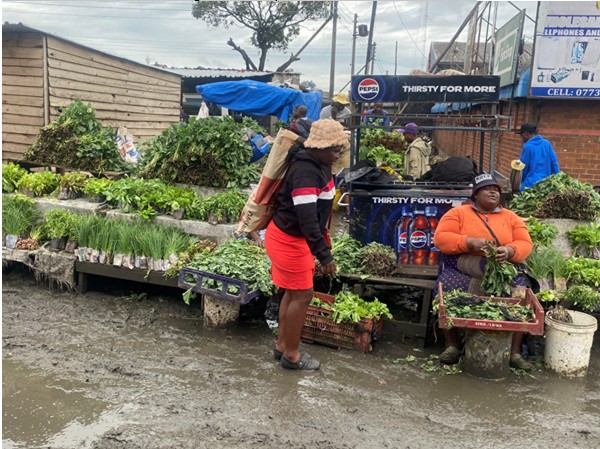For decades, companies that sell seed, fertilizer, chemicals and other inputs have been more interested in increasing their sales volumes irrespective of whether those inputs change the lives of farmers or not. An increase in the number of companies selling the same products to the same farmers in many African countries is not only confusing farmers but also leading to gluts of horticulture commodities. Lack of reliable market for the produce is dismantling inputs supply business models as few farmers go back to buy seed and vines from nurseries.

How can inputs suppliers reinvent themselves?
Unless inputs suppliers revisit their models, most of them are heading for extinction together with farmer-focused promotions like demonstration plots and field days. Instead of continuously resorting to aggressive advertisements, inputs suppliers can consider providing other services to farmers and farming communities. For instance, they can conduct soil sampling for farmers and then recommend new types of fertilizer in line with particular soils. They can also build markets for farmers so that many farmers earn better income to be able to demand for seed and other inputs.
Soil sampling and bringing the commodity market closer to farmers will be a better value-added service than continue selling seed, fertilizers and chemicals which farmers can buy for themselves depending on their ability to earn income. The majority of African farmers have acquired adequate knowledge on seed varieties and how to use diverse inputs because production knowledge has been provided for decades. A major concern for farmers is the ever-rising cost of inputs when compared to income from the market. Seed companies that survive the competition and out-compete their peers are those who will invest in understanding the commodity market at a granular level and carefully disaggregate their inputs in line with the demands of particular markets. That includes tracking farmers selling in different markets in order to understand their pain points as well as direct feedback from consumer. They would then know which seed should go to which farmers and for which market.
Reducing costs along entire value chains
Inputs suppliers should also assist in reducing costs along the entire value chain. Due to inflation, farmers don’t have control over the price of imported inputs like fertilizer or chemicals. There is need to explore other cost reduction measures of which economies of scale can be a low-hanging fruit. This can happen through inputs companies working with agribusiness hubs and territorial markets which enable farmers to sell their produce locally than transport few quantities to urban markets. By setting up market infrastructure buttressed with Information and Communication Technologies (ICTs), input companies will create and strengthen value chains and income pathways for farmers, triggering more demand for inputs. ICTs should not just be used for production extension purposes but also focus on market-related technical extension as a catalyst for better decision-making.
Investment opportunities, growth pathways and farmer-friendly principles
Rather than working in siloes, inputs suppliers should wake up to the fact that opportunities can only be made visible through evidence gathering, processing and sharing. This is critical for all types of investments ranging from private, social investment to local and government investments. Without evidence, it is difficult to see growth pathways for different classes of farmers or the entire agriculture sector. For instance, after selling commodities through mass markets for more than a decade, to what extent have smallholder farmers improved their livelihoods
Co-creating farmer-friendly principles
Inputs suppliers should collaborate with policy makers and other value chain actors in co-creating the following principles that are critical in developing a resilient and farmer-friendly agriculture system:
- Shared language – When talking about policies, currency, monetary policy, farmers and other value chain actors should also contribute. If the majority of value chain actors do not understand what is happening due to complicated terminologies, implementation will not bear positive fruits.
- Create space for many value chain actors – This can be achieved by banning labels that demean or stigmatize other value chain actors. Such labels or terms include ‘informal’, ‘smallholder’, ‘middlemen’, ‘Koronyera’ and other demeaning classifications. These actors would not be available if they did not meet a need.
- Simplify contribution pathways – Many farmers and other value chain actors do not contribute to talk-shows and conferences where their circumstances are discussed. What forms of media can enable farmers and traders to contribute to key conversations?
- Focus on action – Most policies end at policy level with no actionable items. Catalysing progress is about being action-oriented.
- Simplify connection – What are the pathways of creating networks? In most developing countries, NGOs are doing their thing, farmers are on their own, companies are on their own and government departments are on their own. Connectivity pathways should be developed.
- Challenge the mindset – Traditional mind sets have held sway for generations in ways that limit innovation. For instance, the notion of irrigation schemes needs revamping in people’s mindset if it is to integrate modern infrastructure and ICTs. So far irrigation development is associated with sophisticated machinery only and irrigation schemes.
- Recognition and constructive feedback – Accepting constructive criticism and acknowledging other actors’ contributions can incentivize knowledge sharing. Some value chain actors should be awarded prizes for sharing knowledge, for instance through ICTs, just as some farmers have been winning accolades for achieving higher yields.
- Preserving community status quo – Interventions like food aid tend to disrupt the status quo and social fabric in many farming communities. For instance, when villagers and farmers start receiving cash vouchers to go and buy food in a community where input companies are available and foreign currency is not a major medium of exchange, social norms are weakened. Using foreign currency at community level is not part of a resilient strategy.
- Track and capture added value along value chains – What value is each intervention bringing to the community? Some interventions can cause biodiversity loss but that can continue unnoticed because there is no one monitoring that trend.
Charles@knowledgetransafrica.com / charles@emkambo.co.zw /
Website: www.emkambo.co.zw / www.knowledgetransafrica.com
Mobile: 0772 137 717/ 0774 430 309/0712737430
